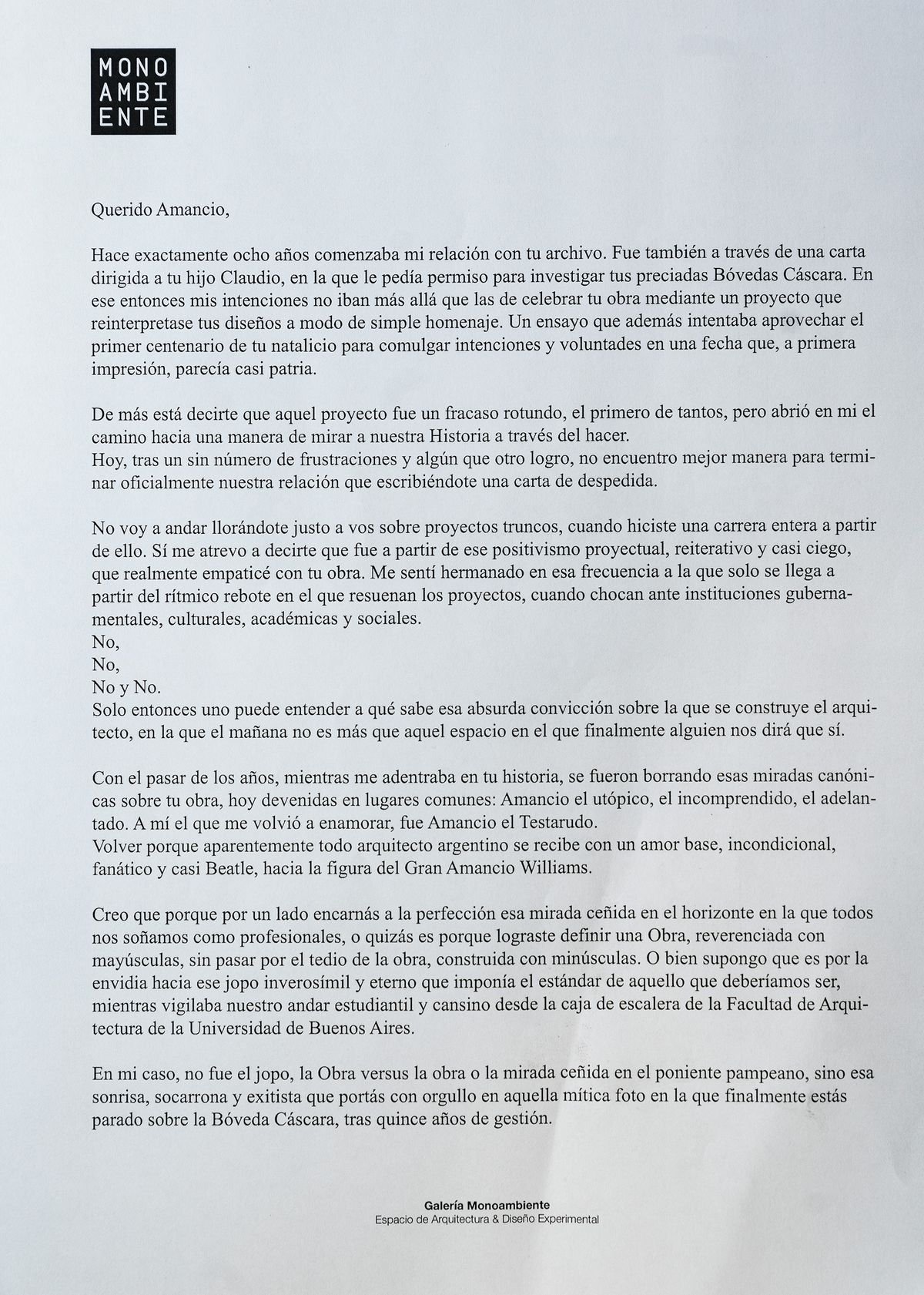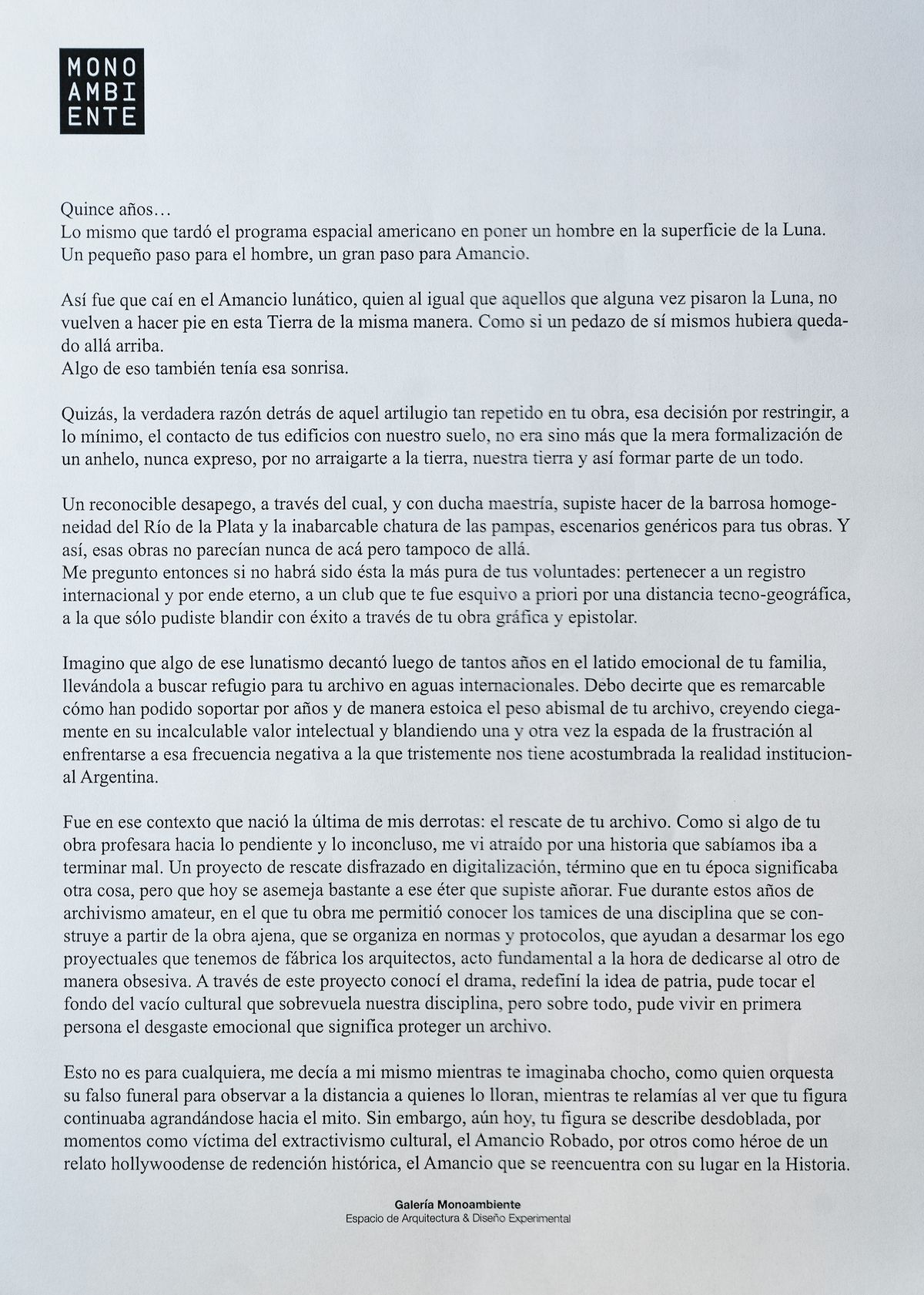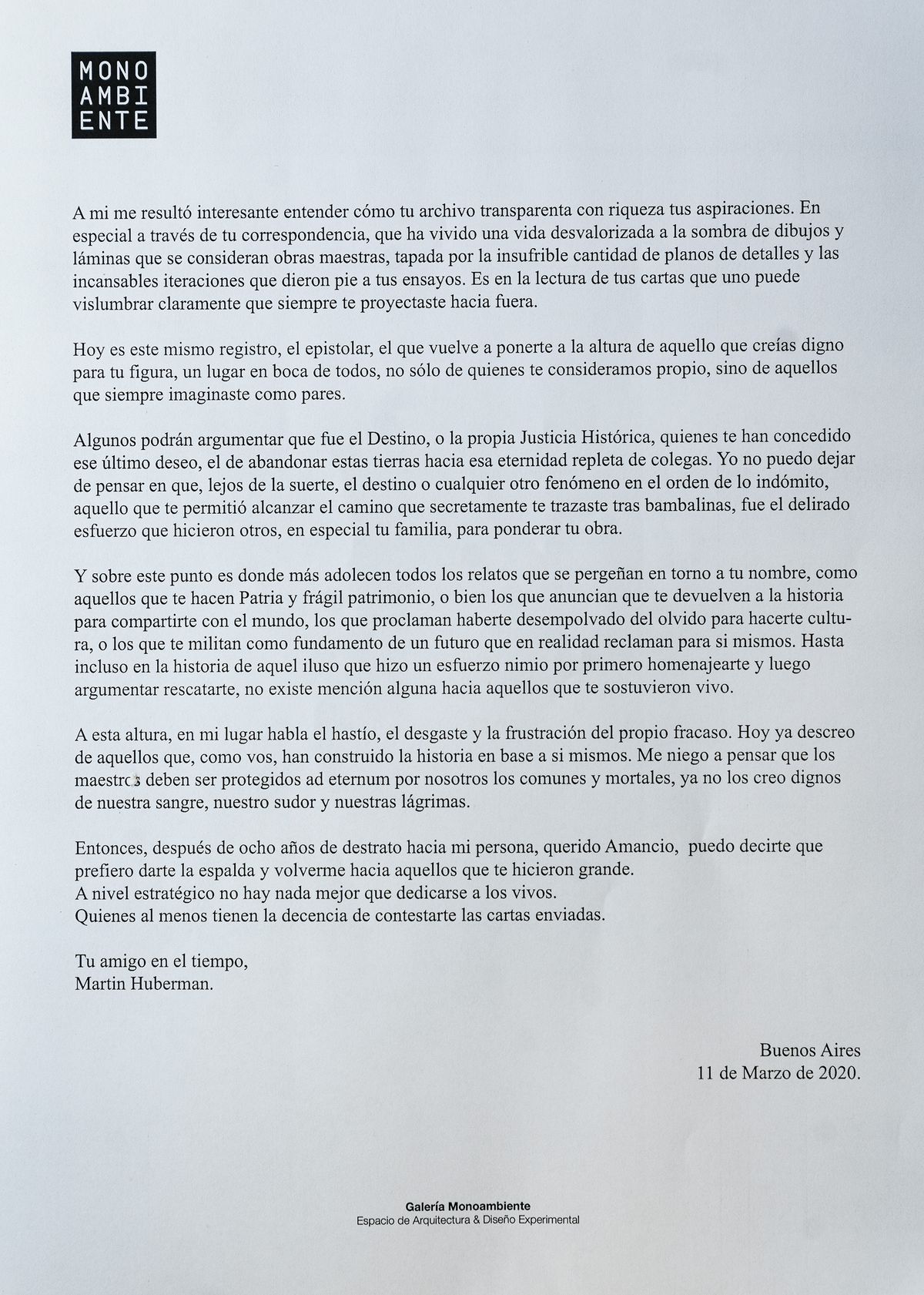Exactly eight years ago, my relationship with your archive was just beginning. It began with a letter addressed to your son Claudio, asking permission to research your admired Shell Vaults. At the time, I had no intention other than to celebrate your work with a project that would reinterpret your designs by way of mere homage. It was an attempt that also aimed to make the most of the first centenary of your birth, a statement of intent on a date which, by first impression, seemed perfect.
Needless to say, that project was a resounding failure, the first of many—but it blazed a trail for a new way of looking at our History through ways of doing.
Today, after countless frustrations and some achievements, I can think of no better way to officially end our relationship than by writing this letter of farewell.
I won’t come crying to you of all people about projects that are nipped in the bud when you made an entire career out of it. What I will say is that it was that reiterative, almost blind projective positivism that made me really empathize with your work. I identified with that frequency, punctuated by the rhythmic rebound with which projects ring when they come up against governmental, cultural, academic, and social institutions.
No,
No,
No
and No.
Only then can one understand what this absurd conviction on which the architect is built tastes like—a conviction in which tomorrow is nothing more than the space in which someone will finally say yes to us.
With the passing of the years, as I went deeper into your history, those canonical opinions of your work that are now commonplace were erased: Amancio the utopian, the misunderstood, the architect before his time.
The one that fired me up again was Amancio the stubborn. All Argentinian architects qualify with a basic, unconditional, fanatical, almost Beatle-like love for the figure of the Great Amancio Williams. Partly, I believe, because you perfectly embody that steady gaze into the setting sun that we dream of when we become professionals, and partly I think because you managed to define a body of Work, revered in capital letters, without going through the tedium of building work, constructed in lower case. Then again, I suppose it’s out of envy of your eternal, implausibly smooth comb-back that set a standard for our achievements, as it watched our plodding student gaits from the stairwell of the Faculty of Architecture of the University of Buenos Aires.
In my case, it was not the smooth comb-back, Work versus work, or the steady gaze into the sunset of La Pampa, but the sly everyone-loves-a-winner smile that you proudly wear in that mythical photo of you finally standing on the Shell Vault after fifteen years of negotiation. Fifteen years. The same time it took the US space program to put a man on the moon. One small step for man, one giant leap for Amancio.
And so it was that I hit upon the moon-struck Amancio and, like those who had walked on our only natural satellite, never set foot on this Earth in the same way again. Some astronauts have said that they left a part of themselves up there. There was something of that, too, in your gaze.
Perhaps the real reason behind that ruse so often repeated in your work, that decision to restrict, to a minimum, the contact of your buildings with our soil, was simply the formalization of a longing, never expressed, to not take root in the land and, therefore, to be part of a greater whole.
With masterly skill, you made with a recognizable detachment the muddy homogeneity of Río de la Plata and the endless flatness of the Pampas a generic setting for your works. Those works never seemed to belong to one place or another.
I wonder, then, if this was not the purest of your determinations: to be inscribed in an eternal and therefore international register, to belong to a club that was, a priori, elusive due to a technical-geographical distance at which you could only truly shine through your graphic and epistolary work.
I imagine that, after so many years, some of this lunacy seeped into the emotional pulse of your family, prompting them to find for your archive a refuge across international waters. I have to say it is remarkable how they have for years stoically borne the abysmal weight of your archive, blindly believing in its incalculable heritage value and brandishing over and over the sword of frustration when faced with the negative frequency to which Argentina’s institutional reality has accustomed us.
It was in this context that the last of my defeats was born: the rescue of your archive. As if something in your work professed the pending and the unfinished, I was drawn to a story that we knew would end badly. A rescue venture disguised as digitization, a term that in your time meant something else, but which today rather resembles that ether for which you longed. It was during those years of amateur archivism, when your work acquainted me with the nuances of a discipline that is built on the work of others, that is organized by norms and protocols, but which, above all, helps to unblock the projective ego that we architects have, vital when devoting oneself obsessively to the other. By means of this venture, I knew drama, I redefined the idea of homeland, I touched the bottom of the cultural void looming over our discipline, but, most of all, I was able to experience first-hand the emotional exhaustion involved in protecting an archive.
Telling myself this was not a venture for everyone, I imagined your delight, like someone orchestrating a false funeral to see from a distance who was mourning him, gloating to see your figure growing and growing to a mythical status. Today, divided, a victim of cultural extractivism, Stolen Amancio, now a hero of a Hollywood story of historical redemption, Amancio Restored to his place in History.
The way I see it, it is interesting how your aspirations richly transpire from your archive. I find, particularly in your correspondence, which has always lived in the shadows of your drawing, the plates that were considered masterworks, the insufferable quantity of detailed plans and the untiring iterations of your essays, that we see that you always projected outwards.
Today it is this register, the epistolary, that once again places you at the level you thought your figure deserved, talked of not only by those of us who consider you our own but by those you always imagined as peers.
Some may argue that it was Fate, or even Historical Justice, that granted you this last wish: to leave this land for that eternity full of fellow architects. I cannot help thinking that, far from luck, fate, or any other-worldly phenomenon, what placed you on this path that you secretly drew behind the scenes was the feverish effort made by others, particularly that your family, to ensure your work was seen for its true value.
And it is on this head that all the stories concocted around your name suffer the most: the importance of those who consider your homeland and fragile heritage, those who return you to history in order to share you with the world, those who have dusted off oblivion to make you culture, those who have used you to militate a future they claim for themselves, and the dreamer who makes a trifling effort first to honour you and then to argue that he is rescuing you.
I am speaking from weariness, attrition, and the very frustration of failure, but today I cease to believe that those who, like you, have themselves built their own history, the masters who should be protected ad aeternum by ordinary mortals, are worthy of our blood, sweat, and tears.
After eight years of disregarding myself, I can now say to you that I will turn my back on you and instead look to those who make you great.
Strategically, our best bet is to devote ourselves to the living, who at least have the decency to answer the letters we send.
Your friend in time,
Martin
Buenos Aires, 11 March 2020


